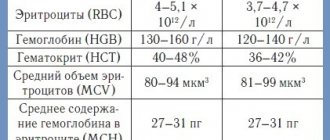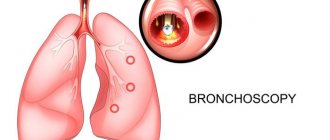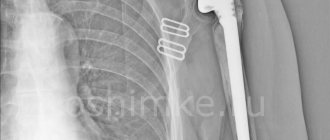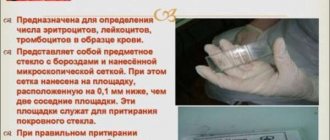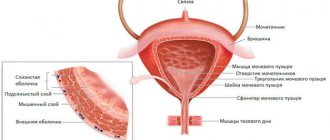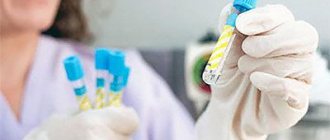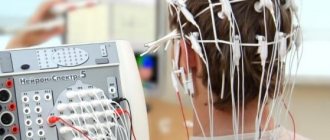In cases where medical staff need to quickly increase the concentration of any medicinal component in the patient’s body, they resort to the bolus method of administering the active substance. This injection consists of administering a large volume of the drug and promotes an accelerated onset of action of the medication. A bolus administration is a technique that is often followed by a drip, which helps gradually transport the remaining required volume of the drug composition into the patient's tissues. The procedure can be performed either intravenously or intramuscularly, or subcutaneously and intrathecally.
Description of the technique
When understanding what bolus administration of a drug means, it is worth understanding that this method of transporting the drug helps to maximize the concentration of the drug used at the end of the manipulation. Later, over time, the concentration level will gradually decrease. Measuring the concentration of a pharmacological composition in the blood plasma immediately after the bolus administration procedure can be used to calculate the volume of distribution of the drug.
Intramuscular injections
Bolus administration is the method most often used to administer classical vaccines when it comes to intramuscular injections. When an injection is given into the muscle, the patient’s body gets time to absorb the incoming drug and produce antibodies to strengthen the immune system.
Medications with an analgesic effect, contraceptive hormonal compounds and testosterone can also be administered intramuscularly. In most cases, bolus-type intramuscular injections involve areas of the human body such as the upper shoulder area or upper thigh area. The fact is that these zones are characterized by increased muscle mass, as well as the ability to spread the injected drug over the surface of the muscle.
Methodology
A typical site for intravenous injections is the elbow veins or cubital veins. Before performing the procedure, the doctor or nurse puts on sterile gloves and then treats the intended injection site with a sterile cotton ball moistened with alcohol or another antiseptic.
The injection itself is carried out in a sitting or lying position, depending on the patient’s condition. An oilcloth pad specially designed for this purpose is placed under the elbow bend. Then a tourniquet is applied to the middle third of the shoulder. Mandatory condition: the tourniquet must be applied to clothing or a layer of fabric (towel, diaper, napkin), but not to the naked body.
After the tourniquet is applied, the patient is asked to do a series of squeezing and unclenching of the hand made into a fist. After such movements, the veins, compressed from above by the tourniquet, are well contoured. At the same time, the most prominent vein is found, which is punctured and pierced with a needle.
During puncture, the syringe is held with the right hand, and the needle is positioned with the cut up and at an angle of 150 to the surface of the skin. In this case, the second finger fixes the needle cannula, and the remaining fingers fix the syringe cylinder. At the time of vein puncture (venipuncture), the patient is asked to clench his hand into a fist. The entry of the needle into the vein is accompanied by a feeling of failure when the needle goes more easily.
After the cut of the needle has entered the vein, it is advanced another 1-1.5 cm. Then, to make sure that the lumen of the needle is really in the vein, they pull the piston towards themselves with the fingers of the left hand. The presence of blood in the syringe indicates that venipuncture was performed correctly.
After this, the tourniquet is removed, the patient is asked to unclench his fist, and the medicine is slowly administered. At the end of the injection, the needle is removed and the puncture site is again treated with a cotton ball. They ask you to bend your arm at the elbow, holding the ball for 2 minutes to avoid a hematoma.
Injecting drugs into a vein
An intravenous bolus is a technique for transporting a drug directly into a patient's vein. Such manipulations are often carried out before placing a drip on the patient in order to increase the quantitative indicator of the medication in a short time through an injection, and then supplement it to the required volume by drip. Most often, such a chain is used when it is necessary to transport antibiotics and chemotherapy drugs into the patient’s body. An initial bolus injection allows providers to quickly relieve fever and control infection before the main course of therapy begins.

Basic insertion techniques
- linear technology
- "sandwich"
- "fan"
- "net"
- "stiffening ribs"
- "fern
- -point technique
- -short-linear (“drip”)
- -bolus
- -vector
- - micropapular technique
Linear technique
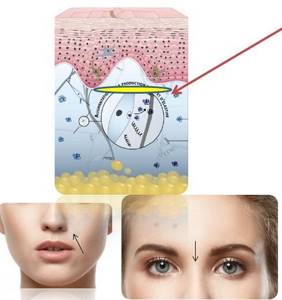
The needle is inserted the entire length into the dermal layers of the skin under the wrinkle. The drug should be injected into the middle or lower part of the dermis. The drug is injected evenly on the reverse stroke of the needle (retrograde), with the same pressure on the syringe piston. As the drug is administered, the wrinkle/fold should be visually corrected during the procedure. It is important to complete the injection of the drug before removing the needle from the skin to avoid leakage of material or entry into the superficial layers of the dermis or epidermis.
Sandwich technique
The needle is inserted full length into the middle dermal layers of the skin under the wrinkle. The drug is injected evenly on the reverse stroke of the needle (retrograde), with the same pressure on the syringe piston. As the drug is administered, the wrinkle/fold should be visually corrected during the procedure. If there is insufficient replenishment of tissue volume, it is possible to introduce an additional volume of the drug into the deeper layers of the dermis.
"Fan" technique
The drug is injected into the dermal layers of the skin in a linear retrograde manner. Several fan-shaped tunnels are drawn from one point at different angles relative to the wrinkle to compensate for the aesthetic deficiency of the tissue.
Multipuncture technique (multiple point injections)
The drug is injected into the middle/lower part of the dermis. Numerous injections are made along the line of the wrinkle/fold being corrected. The drug, precisely injected into the skin, merges into a smooth, continuous line. There should be no gaps between individual portions of the injected material.
Short-line (“drip”) technique
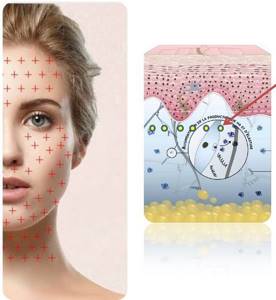
Long-term hydration, improvement of elastic properties of the skin. The drug is injected into the middle/lower part of the dermis. Numerous injections are made along the line of the corrected area.
Grid technique
The drug is injected into the middle/lower part of the dermis in a retrograde manner. Injections are made along and across the line of the wrinkle/fold being corrected (mutually perpendicular to the direction)
"Rib" technique
The drug is injected into the middle/lower part of the dermis in a retrograde manner. Injections are made along and across the line of the wrinkle/fold to be corrected. Different angles of injection in relation to the defect are possible: from sharp to straight.
Fern technique
The needle is inserted into the central, deepest part of the fold (cut down to prevent overcorrection) perpendicular to the wrinkle and clearly into the middle layer of the dermis at 1/2–2/3 of the standard length
Bolus technique of drug administration
This technique is designed to replenish tissue volumes. The needle is inserted deep into the periosteum; upon contact with the periosteum, without moving the needle, the required volume of the drug is injected. A different angle of injection in relation to the defect is possible: from acute to straight.
Vector technique
This technique is designed to replenish tissue volumes. The needle is inserted deep into the periosteum; upon contact with the periosteum, the required volume of the drug is injected retrogradely along the vector. It is possible to administer the drug using this technique under deep fatty tissues.
Subcutaneous bolus injections
In some cases, doctors also use subcutaneous bolus injections to achieve drug release. Such injections enable the drug to penetrate biological membranes gradually, which will provide long-lasting results.
This method, for example, is used when treating drug addicts in a hospital setting. The technique will be especially useful when, as a result of drug addiction, a person’s veins have become unsuitable for medical injections. Morphine and insulin can also be administered subcutaneously.
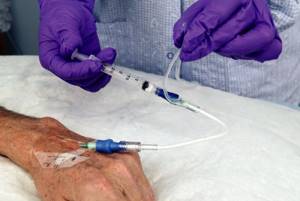
Basal to bolus insulin ratio
Insulin injections are the only way for a patient with type 1 diabetes to keep their blood glucose levels within normal limits. Indeed, with such a diagnosis, the pancreatic cells necessary to produce their own hormone simply die. But what kind of insulin, when and how much to administer is a whole science that diabetics have to master perfectly.
The pancreas of a person who is free from diabetes produces approximately 1 unit of insulin per hour. This process is constant and natural. This secretion of the hormone is called basal or background. It is necessary in order to maintain normal blood sugar levels at night and in between meals.
Bolus or prandial insulin is needed for something completely different. The pancreas produces it in response to food consumption. And this hormone secretion is responsible for our sugar after we eat.
A diabetic whose pancreas has lost the ability to produce insulin must regulate these processes with the help of injections. Moreover, it is not enough to simply inject yourself with a hormone. It is also important to maintain the ratio of alternating basal and bolus. This is the basis of insulin therapy.
As a rule, most of the daily dose of the hormone is bolus, that is, insulin “for food”. This is approximately 50 - 60%. The share of the base, that is, intermediate or long-acting insulin, is from 40 to 50%. This is the average ratio. To understand how much insulin you need, you need to consult an endocrinologist.
Basal insulin is usually administered twice a day: before the first meal and before going back to bed, given the maximum duration of action - 12 hours. Typically, NPH insulins are used for this. But it is worth considering that they begin to work only 2 hours after the injection. If the effect of such insulins is not enough for the day, then they can be administered more often, up to 4 times a day. In this case, injections are given before main meals and also before bed. It is also acceptable to administer NPH insulin before breakfast along with bolus insulin. This greatly simplifies the treatment regimen.
It is possible to evaluate the effectiveness of the chosen treatment regimen by checking your blood sugar levels. A morning bolus of insulin should cover the need for the hormone between breakfast and lunch. Accordingly, measurements should be taken before lunch. The morning dose of basal NPH insulin lasts until dinner, and its effectiveness is assessed before the last meal. The evening bolus injection covers the time interval from dinner to midnight, we measure sugar before bed. But evening basal NPH insulin compensates for insulin deficiency at night, so its effect is assessed by fasting blood glucose levels.
For detailed comments and assistance in determining the dosage of insulin, as well as the ratio of basal and bolus hormones, it is recommended to consult your doctor.
Intrathecal administration
An intrathecal bolus is the release of medication directly into the arachnoid membrane of the patient's spinal cord. The technique is used in many cases, for example, when it is necessary to administer an anesthetic to a woman during childbirth. The procedure is also effectively used for the administration of painkillers and chemotherapy drugs.
Where the bolus injection will be administered depends directly on the goals pursued by the doctor, on the needs of the patient, as well as on the desired speed at which the drug should act. The procedure is very effective when you need to provide emergency care to a person, as well as in situations where cancer or diabetes is being treated. The bolus method of administration allows for a faster onset of action of the drug, which in some cases determines whether the patient will survive or not.

